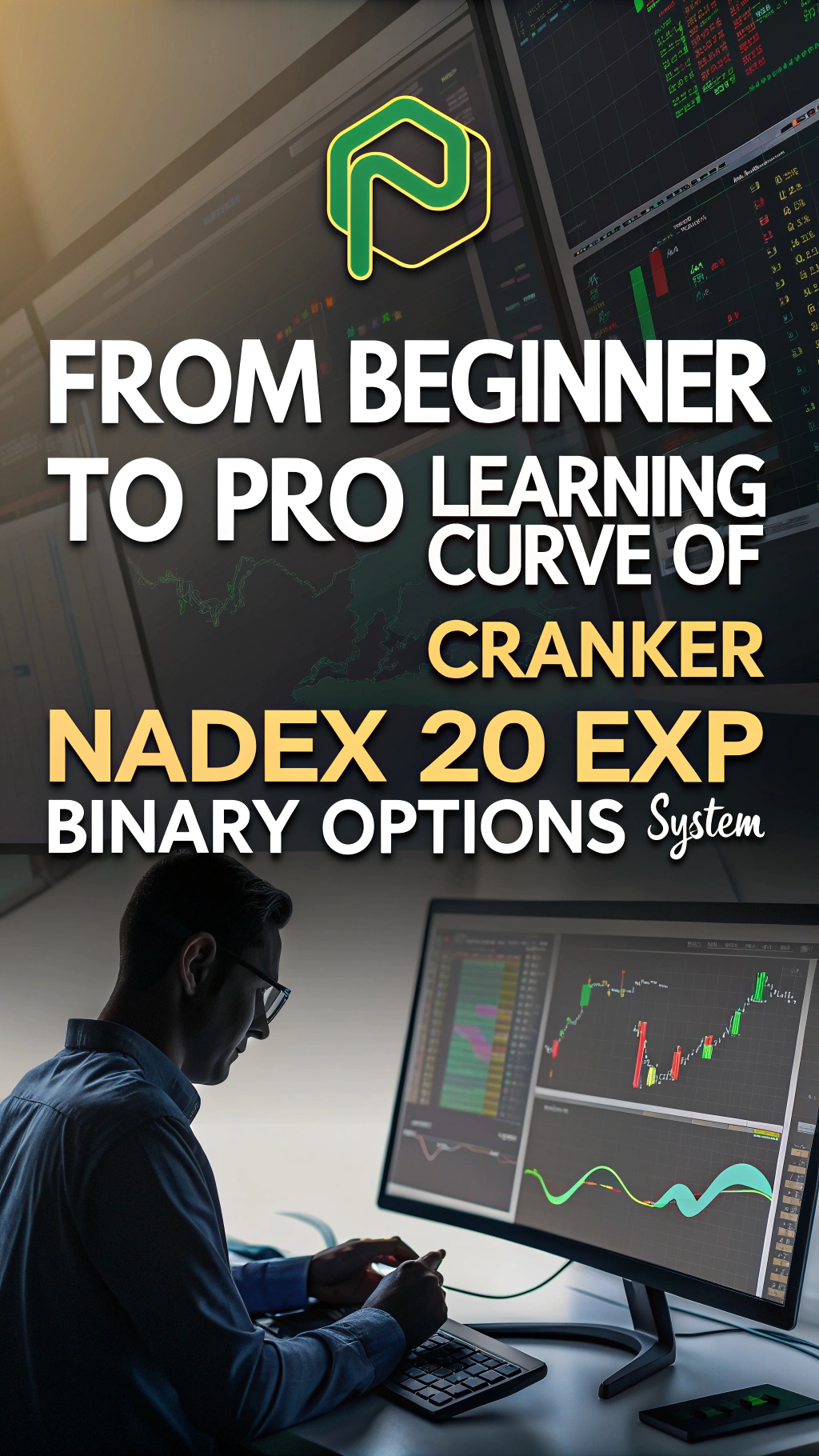From Beginner to Pro: Learning Curve of CRANKER – NADEX 20 Exp Binary Options System
In trading, progressing from novice to experienced practitioner requires a clear path of learning and practice, much like building skills in chart analysis through repeated application. The CRANKER – NADEX 20 Exp Binary Options System offers a straightforward learning curve, starting with quick rule comprehension and advancing to confident execution and scaling. This post guides you through the progression step by step, addressing common challenges from the system’s FAQs and using performance examples to illustrate growth. By following this structured guide, you’ll develop the discipline needed to apply mechanical price action entries effectively, turning initial familiarity into proficient trading across sessions.
Step 1: Grasping the Basics in the Quick Learning Phase
As a beginner, focus first on absorbing the system’s core rules through its home study video course, which teaches a mechanical price action method without indicators for NADEX 20-minute expirations. The system is designed as a fast learn, emphasizing entry triggers on 1-minute charts and selecting at-the-money (ATM) strikes or slightly in-the-money ones when in doubt.
To start effectively:
- Watch the videos to learn the “bread and butter” approach: Identify triggers based on a discovered price action concept, enter promptly, and skip unsuitable strikes without hesitation.
- Address FAQ hurdles early: Understand that the system involves no guessing or early exits; it’s about hammering out trades in sequence to net profits, not optimizing for individual precision.
- Practice recognition: Spend initial sessions reviewing rules, noting how to spot entries quickly, as timely execution is key – delays can miss opportunities, per the FAQs.
This phase builds a foundation, allowing even newcomers to move forward within hours by focusing on objective, repeatable mechanics.
Step 2: Building Skills Through Demo Practice and Historical Review
Transition to hands-on practice using a demo account to simulate real-time trading, addressing common beginner issues like hesitation or strike selection. Study historical data to gain confidence, pretending to react to past price action as if trading live.
Practical progression:
- Demo trading: Execute sequences on instruments like US Small Cap 2000 (RTY) or YM futures, aiming for ATM binaries; use the demo to align with real pricing, though note potential variances as mentioned in FAQs.
- Historical analysis: Review examples like July 23, 2020 (29 wins, 13 losses, net 16 on RTY), calculating $800 per contract to see how nets accumulate without picking trades.
- Overcome challenges: FAQs highlight the need to practice spotting triggers and entering correctly; work on attention span by starting with short sessions, gradually extending to match your comfort.
Through repetition, you’ll shift from uncertainty to familiarity, learning to trade all signals in a row for the system’s designed edge.
Step 3: Advancing to Live Trading and Position Scaling
Once proficient in demos, move to live trading with small positions, scaling up as nets prove consistent and your account grows. This pro-level step emphasizes discipline in taking sequential trades, evolving from beginner caution to confident volume.
Scaling guide:
- Start small: Begin with 1 contract per trade, using business math to project growth; for the July 23 net 16, this yields $800, scaling to $8,000 on 10 contracts as you build capital.
- Session flexibility: Trade 1-2 hours initially, like the March 10, 2020, example (17 wins, 6 losses, net 11 in 2 hours for $550 per contract), then expand to full days for higher nets, such as November 2, 2020 (net 29 for $1,450 per contract).
- Discipline focus: FAQs stress working the system consistently; avoid cherry-picking, as it’s built for netting over series – practice this to handle variables like market conditions without adjustments.
This advancement teaches sustainable growth, where mechanical repetition leads to compounded results.
Step 4: Refining for Long-Term Proficiency and Broader Application
As a pro, refine your approach by analyzing personal results against historical benchmarks and extending the system’s concepts to other markets. Address ongoing hurdles like maintaining focus through continuous review.
Refinement strategies:
- Performance tracking: Compare your nets to examples like November 5, 2020 (net 15 on RTY for $750 per contract), adjusting for factors such as entry timing while staying true to rules.
- Broader use: Apply the price action discovery to Forex, stocks, or futures, evolving it into day or swing strategies for diversified proficiency.
- Sustained discipline: FAQs note that success comes from getting used to the system through practice; if challenges persist, ensure full understanding before exploring optimizations.
This final step solidifies your expertise, enabling adaptable, high-performance trading.
In summary, the learning curve of the CRANKER – NADEX 20 Exp Binary Options System progresses from quick basics to pro-level scaling through structured phases of study, practice, execution, and refinement. By tackling FAQs and examples like the July 23 results, you cultivate discipline for consistent nets. Follow these steps diligently, practice routinely, and advance your skills methodically for lasting trading capability.






